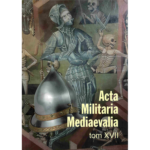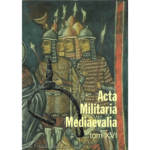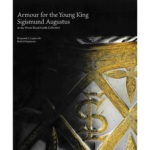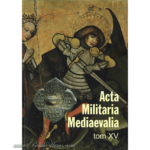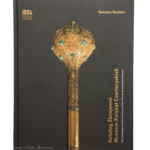
PDF – Excavations in Podhorce
 |
‘MILITARY ITEMS FROM THE 19TH-CENTURY EXCAVATIONS IN PODHORCE’
by RADOSLAW LIWOCH |
This is the article from the 1st volume of the archaelogical magazine Acta Militaria Medievalia, published a few years ago. All copies of the book were sold quite fast, so the publisher (Museum of Sanok and Polish Academy of Science), decided to put PDF version of the magazine on the web.
Below you’ll find the file for download with the article (PDF file compressed with rar). The file includes copyable text, you can later put into the translator on this site. Below you can read English summary of the paper.
 |
(1 MB) |
SUMMARY
This article deals with the arms discovered in the Galician village of Podhorce during the excavations commenced in 1874 by Bolesław Szaniawski and the excavations conducted between 1881 and 1883 by Tadeusz Ziemięcki. The items found by B. Szaniawski were handed over to the Lubomirski Family Museum (part of the Ossoliński National Institute) in Lvov, whereas the ones obtained during the excavations conducted by T. Ziemięcki are housed in the Cracow Archaeological Museum (at inventory no. MAK/3744).
B. Szaniawski found an iron sabre in one of the burial mounds (the close of the 10th cent. – 1st half of the 11th cent.; fig. 1), and the local pheasants presented him with an axe blade (the 10-11th cent.; fig, 2) and a spearhead (10-13th cent.?; fig. 3).
T. Ziemięcki found four iron arrowheads (10-13th cent.; fig. 4-7; photos 1-4) in the excavations carried out on the stronghold in 1881, an iron bit and a bit shaft (10-13th cent.; fig. 8-9; photos 5-6) and fragments of two iron spurs (12-13th cent.; fig. 10-11; photos 7-8). He found an S-type sword according to J. Petersen, encrusted with silver, brass and copper (latter half of 10th cent. – early 11th cent.; fig. 12-13; photos 9-11) in a burial mound. In 1882 a V-type iron sword according to J. Petersen, ornamented with silver and copper and with a Damascus-steel blade was found by him in one of the burial mounds, as well as brown chape of scabbard of the sword and an iron battle-axe (close of the 10th – early 11th cent.; fig. 14-17; photos 12-20). The other burial mound revealed a copper-encrusted iron battle-axe (close of 10th – 1st half of 11th cent.; fig. 18, photos 21-22). The last military item – an iron arrowhead (11-12 cent.; fig. 19, photo 23) was found by him in one of the graves in 1883.
The aforementioned historical items are divided into two groups – commonly used weapons and horseriding kit (arrowheads, bits, spurs, an axe and a spearhead) and well as exclusive arms (swords, battle-axes, a sabre) discovered in burial mounds. The mounds should be considered the only sergeants-at-arms’ necropolis to be recognised in the west of Ukraine. In terms of chronology and material it corresponds to the earlier stages of the burial grounds referred to as „Staraâ Ladoga-Gnëzdovo-Šestovicâ”. The rich graves of Podhorce give us grounds to presume that the early-mediaeval Pleśnisko was a residence of the representatives – arguably of a non-Slavonic descent (the Varangians?) – of the grand duke of Kiev. It is difficult to precisely define the time limits of that hypothetical centre of grand duchy administration – it was arguably the latter half of the 10th and the 1st half of the 11th cent. In conclusion, it may be noted that the described items make up one of the more interesting early-mediaeval military collections from Ukraine and present a significant value for reconstructing the history of the western part of that country in that period.
Translated by Ireneusz Paternoga
